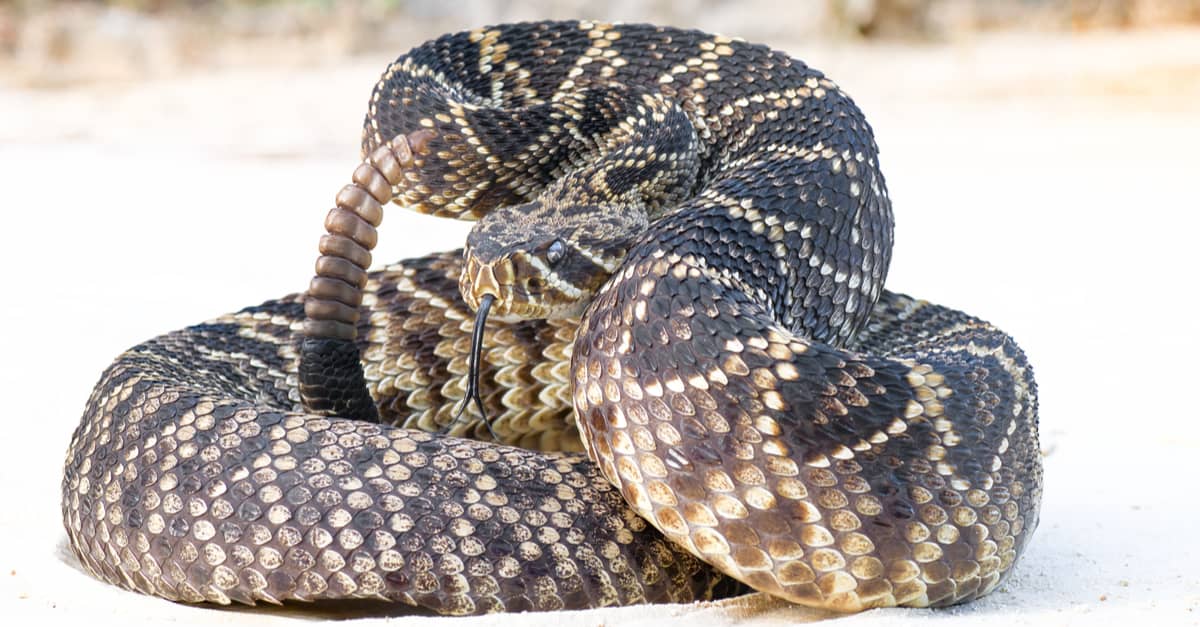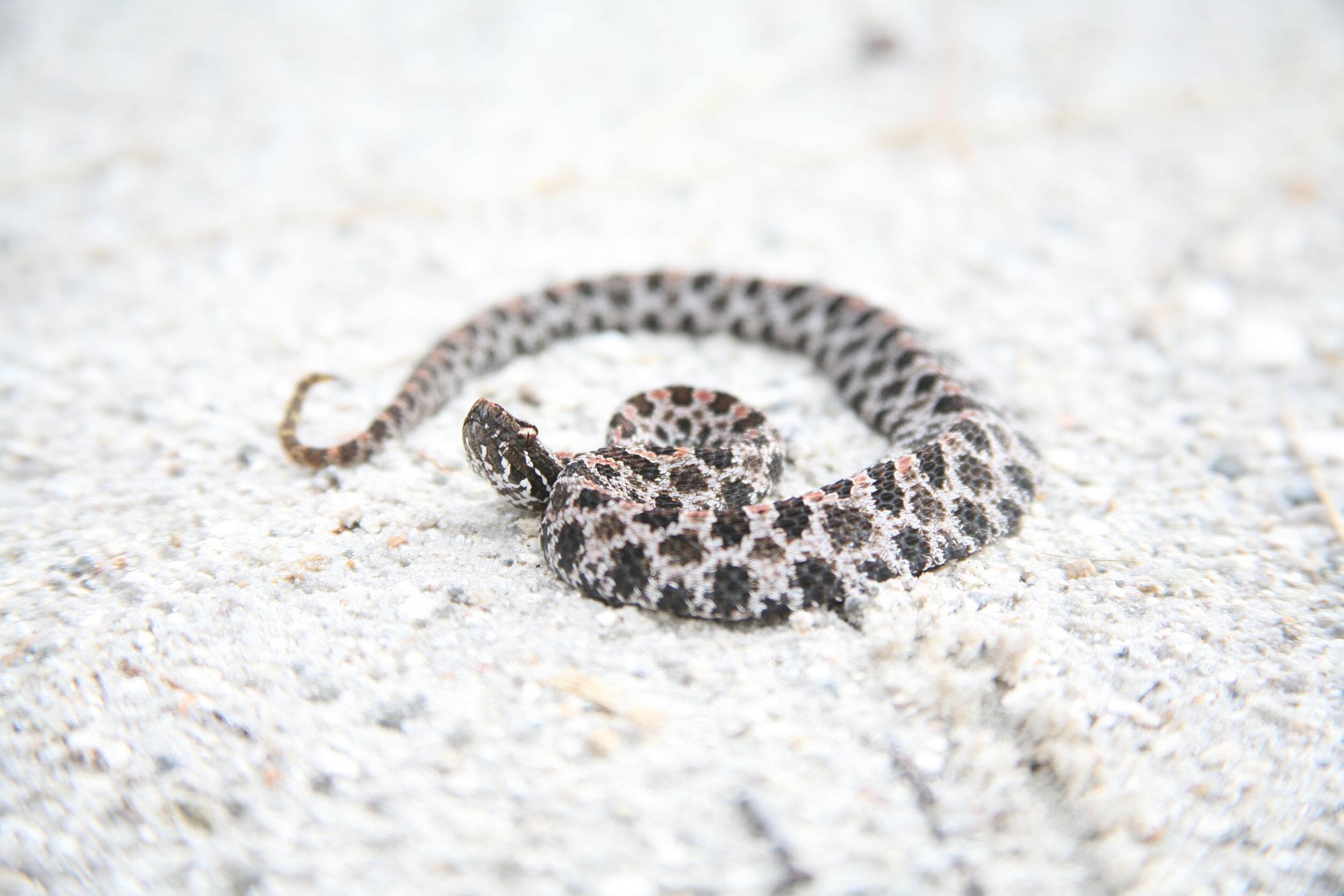Florida is home to a diverse range of wildlife, including 46 different species of snakes. Of these, only six are venomous, and three of them are rattlesnakes. Rattlesnakes are a type of pit viper and are easily recognizable by the rattle on their tail, which they use as a warning signal when threatened.
In this article, we will take a closer look at the three types of rattlesnakes found in Florida, including their physical characteristics and habitats. It is important to note that all three types of rattlesnakes in Florida are venomous and should be avoided.
You are reading: Discover The 3 Types Of Rattlesnakes In Florida

3 Types Of Rattlesnakes In Florida
Eastern Diamondback Rattlesnake

The Eastern Diamondback Rattlesnake (Crotalus adamanteus) is the largest venomous snake in North America, and it is one of the three types of rattlesnakes found in Florida. This species is easily identified by the diamond-shaped pattern along its back, which is the source of its common name.
The eastern diamondback rattlesnake can be blackish-gray, olive green, or muddy gray, and its skin appears dull rather than shiny due to the light reflected off of its keeled scales. Its tail is typically a different shade than its body, ranging from brown to gray and banded with dark rings.
The Eastern Diamondback Rattlesnake has a large, broad head with a dark stripe, outlined in white, that runs diagonally through the eyes to the neck. It has vertical, cat-like pupils, and there is a large pit between the nostril and the eye on each side of its face, which senses heat in their environment.
Eastern Diamondback Rattlesnakes are found in the southeastern United States, from Florida (Keys and peninsula) north to coastal areas of North Carolina, West Mississippi.
They usually inhabit dry sandy areas, palmetto or wiregrass flatwoods, pinewoods, coastal dune habitats, or hardwood hammocks. They generally avoid wet areas.
Eastern Diamondback Rattlesnakes are well known for their rattle and painful, venomous bite, which can be fatal to humans. The toxin in their venom, called hemotoxin, kills red blood cells and causes tissue damage.
Read more : Top 10 Tallest Horses In The World
However, human deaths from rattlesnake bites are rare because the antivenom is available throughout its range.
Dusky Pygmy Rattlesnake

The Dusky Pygmy Rattlesnake (Sistrurus miliarius barbouri) is one of the three types of rattlesnakes found in Florida. It is a small venomous pit viper, also known as Barbour’s pygmy rattlesnake, Florida ground rattlesnake, hog-nosed rattler, pygmy ground rattlesnake, pygmy rattler, pygmy rattlesnake, small rattlesnake, and southeastern ground rattlesnake.
The Dusky Pygmy Rattlesnake is one of the smallest rattlesnakes in the world, with adults usually growing to between 12 and 24 inches (30-61 cm) in total length, including the tail.
The body color varies from light to dark gray, and a lengthwise row of black or charcoal blotches disrupts a reddish-brown stripe running down the middle of the back.
The tail is slender and ends in a tiny rattle. The head is distinct from the neck and has a black diagonal line just behind the eye. The coloration of juveniles is the same as described for adults, except the tail tip of juveniles is bright sulfur-yellow in color.
Dusky Pygmy Rattlesnakes are found throughout Florida and in every county, except for the Florida Keys. They are “sit-and-wait” ambush predators, often not moving from their spot for days at a time, and they feed on small prey such as lizards, frogs, and rodents.
The Pygmy Rattlesnake bites are painful but rarely fatal to humans.
Timber Rattlesnake (or Canebrake)
The Timber Rattlesnake (Crotalus horridus), also known as the Canebrake Rattlesnake, is one of the three types of rattlesnakes found in Florida.
This species is a large, heavy-bodied snake with a series of large, black, chevron-like crossbands down the pinkish-gray or tan body. There is a reddish-brown stripe running down the center of the back, and the tail is usually uniformly black, ending in a rattle.
Read more : The Top 10 Fastest Sharks Found In U.S. Waters And Where You Might Encounter Them
The head is distinct from the neck and sometimes has a dark diagonal line through the eye or just behind the eye. The Timber Rattlesnake varies in coloration, with some having a gray color, sometimes with a pinkish hue, and others having a brown or black stripe.
The stripe on their back is orange, yellow, or pinkish in some Timber Rattlesnakes. The Timber Rattlesnake is found in only 12 counties in northern Florida.
Loose sections of the tail made of keratin form the characteristic rattles or “buttons” at the tip of the Timber Rattlesnake’s tail. When threatened, it props itself up and shakes its rattle, which presses the buttons together, producing a rapid, crisp rattling sound that serves as a warning before the snake strikes.
The Timber Rattlesnake is venomous, with a very toxic bite, but it is more docile than other rattlesnake species.
FAQS
1. Are all three types of rattlesnakes in Florida venomous?
Yes, all three types of rattlesnakes found in Florida are venomous and should be avoided.
2. What is the largest rattlesnake in Florida?
The Eastern Diamondback Rattlesnake is the largest venomous snake in North America and can grow up to 8 feet long.
3. What is the smallest rattlesnake in Florida?
The Dusky Pygmy Rattlesnake is one of the smallest rattlesnakes in the world, with adults usually growing to between 12 and 24 inches (30-61 cm) in total length, including the tail.
4. Where are Timber Rattlesnakes found in Florida?
Timber Rattlesnakes are found in only 12 counties in northern Florida, as far south as Gainesville.
5. What should I do if I encounter a rattlesnake in Florida?
If you encounter a rattlesnake, it is best to give it a wide berth and leave it alone. If you are bitten by a rattlesnake, seek medical attention immediately.
6. Are rattlesnake bites fatal?
While rattlesnake bites can be painful and dangerous, human deaths from rattlesnake bites are rare because the antivenom is available throughout its range.
Source: https://petstutorial.com
Category: Animals










